Below is a short summary of the trip that I and two others took to Oman in October 2016. Whilst this was not a trip based specifically around finding scorpions, I was able to squeeze in short searches most evenings.
Aside from this countries awesome scorpion fauna, Oman is a great destination for an easy but adventurous holiday. The capital city of Muscat is a wealthy, modern place with all the conveniences you would expect to find in any European country (supermarkets, McDonalds, cinemas, wifi etc. etc.). There's enough to see and do here to keep you amused for at least a few days.
Outside of Muscat and some of the other large towns, local life is much more basic. The people who live out here always seemed happy to give us a wave and shout hello.
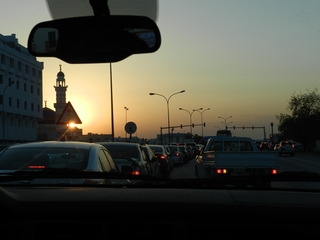


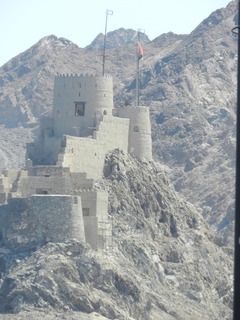
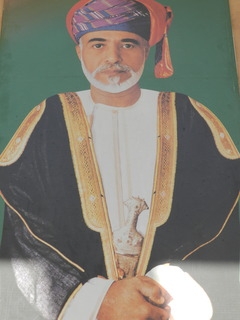 Clockwise from top left: Evening traffic in Muscat.
Clockwise from top left: Evening traffic in Muscat.
Sultan Qaboos Grand Mosque, Muscat.
Sultan Qaboos bin Said al Said. The ruler of the Sultanate of Oman since 1970. You will see his picture everywhere in Oman.
One of many forts in Oman. This one looks out over the bay in Muttrah, Muscat.
Me and some lovely tiling.After spending 3 nights in Muscat, we set off on the second part of our trip; 7 days of off-roading and camping around northern Oman. The country is developing very quickly and many places are connected by lovely new tarmacked highways. However, there are still hundreds of miles of graded tracks that take you away from modern Oman and into remote and traditional areas. Wild camping is safe and legal here so we'd pull over in the late afternoon and setup camp. We brought our own camping gear with us, but you could also have stocked up on most items of camping gear in one of the huge malls/supermarkets in Muscat. Tents, sleeping bags, stoves, gas etc. are all available at similar prices to what you would pay in Western Europe.
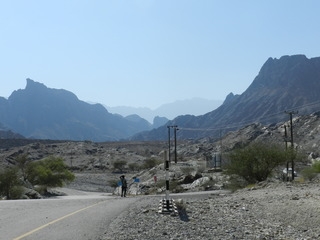
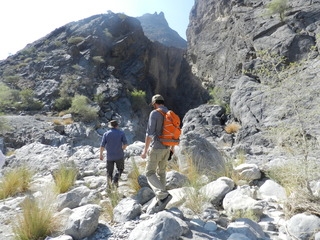
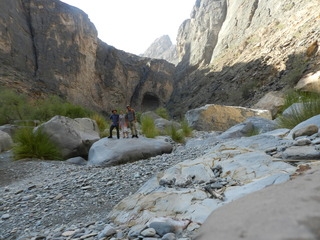
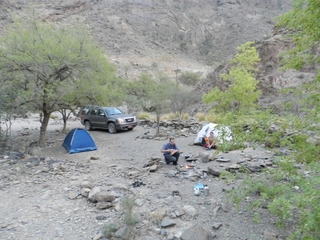 Clockwise from top left: End of the blacktop.The start of Wadi Bani Awf, Western Hajar Mountains.
Clockwise from top left: End of the blacktop.The start of Wadi Bani Awf, Western Hajar Mountains.
Me and Dan head off towards Little Snake Canyon.
First nights camp. Half way along the track through Wadi Bani Awf.
Dan; my girlfriend, Charlotte, and me. Little Snake Canyon.

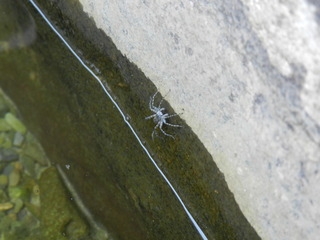
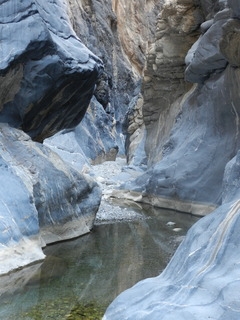

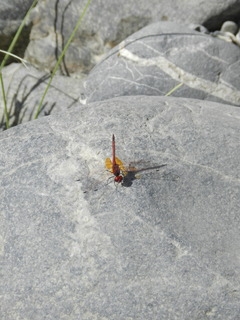
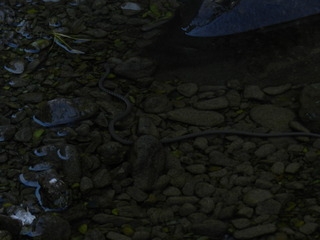 Clockwise from top left: Everywhere there was water, there was lots of life. Wadi Bani Awf.
Clockwise from top left: Everywhere there was water, there was lots of life. Wadi Bani Awf.
Unknown spider.
Bufo sp.??
Wadi Racer (Platyceps rhodorachis) hunting fish in Little Snake Canyon.
Dragon fly.
Pool in Little Snake Canyon. The water was full of Garra sp. I took my boots off to get a free pedicure whilst Dan went off to explore.
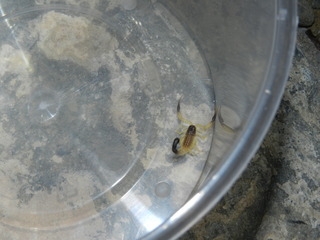

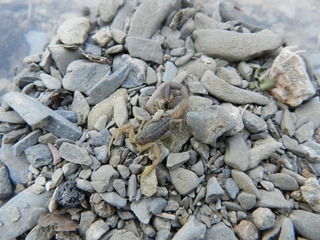
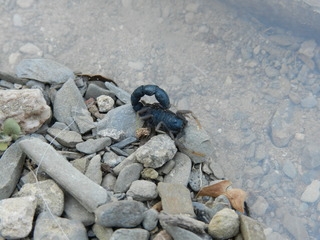 Clockwise from top left: Juvenile Hottentotta jayakari.
Clockwise from top left: Juvenile Hottentotta jayakari.
Hottentotta jayakari.
Orthochirus cf. glabrifrons.
Compsobuthus cf. maindroni.
Scorpions were extremely common at this first camp. Inparticular,
Hottentotta jayakari which were sitting out in the open all over the place. The first time I turned on the UV torch there was an adult
H. jayakari sat on a rock a few feet behind my tent. In the morning, Dan found a juvenile
O. cf.
glabrifrons that had spent a cosy night under his sleeping mat.
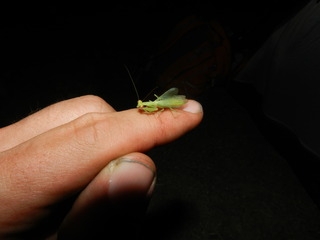
 Clockwise from top left: A visiting praying mantis.
Clockwise from top left: A visiting praying mantis.
Goats are everywhere in Oman. These guys kept me awake all night with their cries that sound like some lost person shouting ''help''!! They then helped themselves to breakfast.......


[/ur]
Clockwise from top left: Looking down into one of the narrow canyons.
Dan, Charlotte and our wholly unsuitable vehicle near the top of Wadi Bani Awf. You can just about make out the miles of hairy switchbacks and steep drops we drove along. 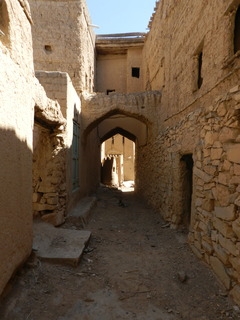
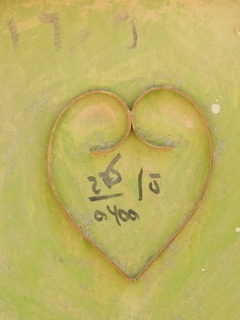
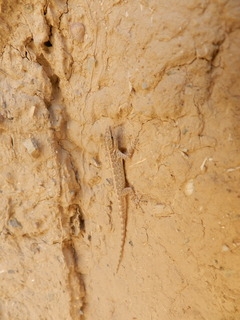 Clockwise from top left: The 400 year old mud-brick buildings of Al Hamra. Most were abandoned. In any other country a place like this would be choked full of tourists. We had it to ourselves.
Clockwise from top left: The 400 year old mud-brick buildings of Al Hamra. Most were abandoned. In any other country a place like this would be choked full of tourists. We had it to ourselves.
Door ornamentation in Al Hamra.
Well, we weren't completely on our own.


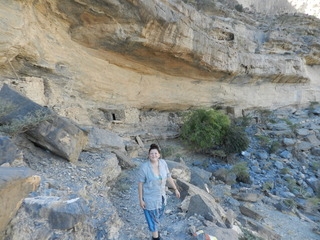 Clockwise from top left: Standing on the edge of Oman's ''Grand Canyon'', Wadi An Nakhur. The highest peak in Oman, Jebel Shams (3009m), is just out of shot.
Clockwise from top left: Standing on the edge of Oman's ''Grand Canyon'', Wadi An Nakhur. The highest peak in Oman, Jebel Shams (3009m), is just out of shot.
Above the abandoned village of As Sab, at the end of the balcony walk is a very refreshing pool to swim in.
The start of the village of As Sab. The houses here are built on a ''balcony'' 2/3rds of the way up the canyon wall.
Up in the high areas around Jebel Shams and Jebel Akhdar temperatures are much more pleasant. Above 2000m it was always below 28c during the day. Overnight camping on Jebel Shams it was almost cold! Jebel Shams was also the only place I didn't find any scorpions. Another thing to note is that to go up to the Saiq Plateau/Jebel Akhdar you must have a 4x4 vehicle. There's a police checkpoint at the start of the tarmac road just passed Birkat Al Mawz. I had read that this was also the case for Jebel Shams, although when we drove up there was no police checkpoint.
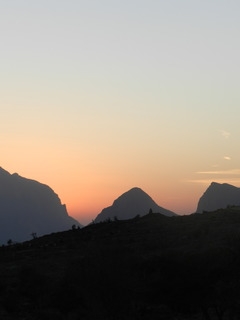

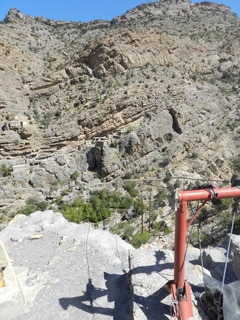 Clockwise from top left: Sunset in the Western Hajar Mountains.
Clockwise from top left: Sunset in the Western Hajar Mountains.
Nizwa's Friday livestock market. Early morning entertainment.
The village of As Sawjrah. The village is built into the side of a cliff so the only way to get supplies to it is via a cable car!
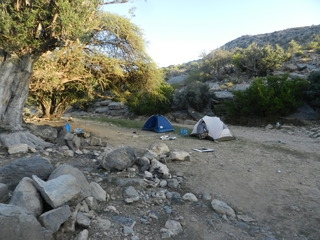
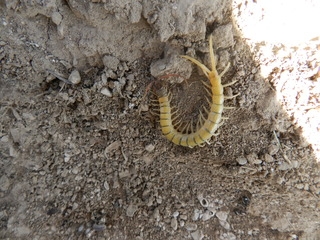
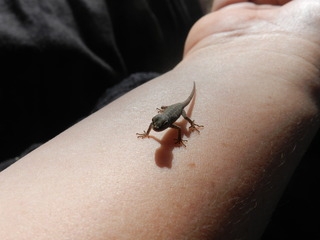
 Clockwise from top left: Camping out on the Saiq Plateau near the village of Ar Ruus.
Clockwise from top left: Camping out on the Saiq Plateau near the village of Ar Ruus.
Scolopendra sp.
Sneaky goat.
Another new friend.
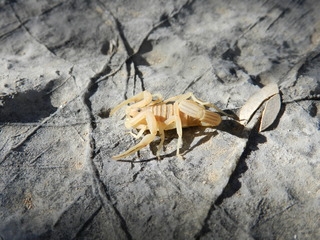


 Clockwise from top left: Hottentotta saxinatans.
Clockwise from top left: Hottentotta saxinatans.
Compsobuthus cf. maindroni.
H. saxinatans under UV light.
Nebo omanensis.
On the Saiq Plateau we camped out at around 1900m. The temperature here was relatively cool at night so although we found a lot of evidence of scorpions in the form of shed skins, we didn't find a huge amount of live ones. It wasn't all bad, though. The tree sheltering our camp provided a home to many
Nebo omanensis that had burrowed under the roots and rocks at the base of the trunk. Across the dry wadi on the exposed rock shelves there was also the very nice
Hottentotta saxinatans.
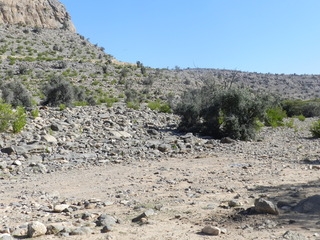

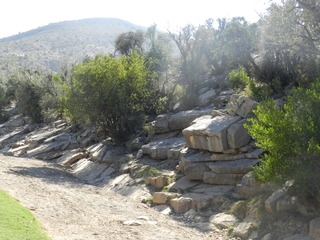 Clockwise from top left: A few C. cf. maindroni were found under rocks in this stony area next to camp.
Clockwise from top left: A few C. cf. maindroni were found under rocks in this stony area next to camp.
Around 10 N. omanensis of various ages were found within a metre of this tree. Most had created burrows at the base of large rocks or roots.
Across the wadi, H. saxinatans were found sitting in the open on top of the rock ledges at night.
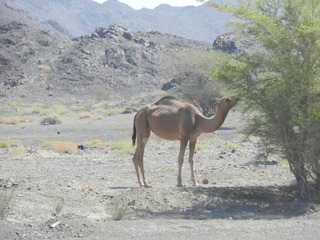
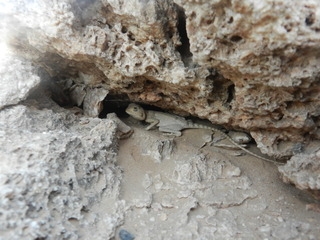
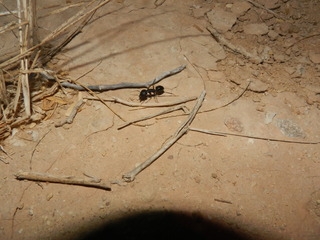
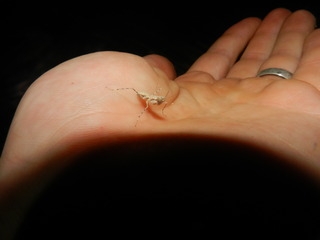 Clockwise from top left: Camel.
Clockwise from top left: Camel.
Some kind of Agamid hiding under a rock.
Eremiaphila sp.?? A beautiful mantis that took residency on top of my tent.
Huge ant. These guys quickly found the noodles we cooked!

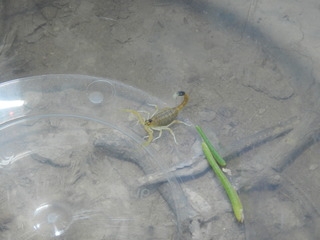

 Clockwise from top left: Hottentotta jayakari.
Clockwise from top left: Hottentotta jayakari.
Juvenile Leiurus macroctenus.
Solifugid.
Leiurus macroctenus.
Camping out near Ras al Jinz we didn't find anywhere to pitch until the sun had set. Whilst clearing the area I very nearly put my hand on a
Leiurus macroctenus that was sheltering under a small piece of wood! Dangerous scorpions aside, camping near to the beach at Ras al Jinz meant we were able to go on the early morning turtle walk led by the guides at the reserve there. The walk cost 5OR and was worth every penny. It's an amazing sight to see these huge, prehistoric animals lumber across the sand.
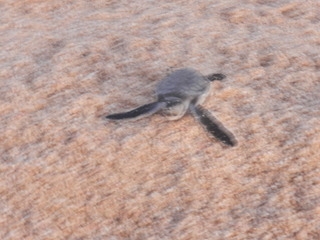
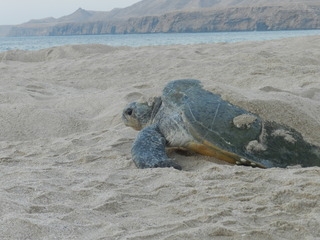
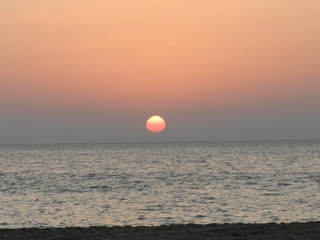
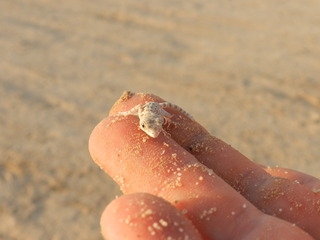 Clockwise from top left: Blurry hatchling Hawksbill Turtle (Eretmochelys imbricata).
Clockwise from top left: Blurry hatchling Hawksbill Turtle (Eretmochelys imbricata).
Female turtle (E. imbricata) returning to the sea.
Another new friend picked up on the beach.
Sunrise over the Indian Ocean.


 Clockwise from top left: One of only two dogs we saw in Oman. Omani's are definitely not dog people.
Clockwise from top left: One of only two dogs we saw in Oman. Omani's are definitely not dog people.
The pretty, coastal town of Sur.
A beehive tomb in the Eastern Hajar Mountains, near Qurun. Some of these date back to 2500 B.C.


 Clockwise from top left: Driving along a ridge top near Wadi Bi'ir, Eastern Hajar Mountains.
Clockwise from top left: Driving along a ridge top near Wadi Bi'ir, Eastern Hajar Mountains.
The start of the drive in to the top of Wadi Tiwi. Further on, Dan seriously tested the ability of the stupidly big American ''off-road'' vehicle.
Amazingly the only real problem we had with our vehicle. One burst tyre and no working jack meant we had to improvise. Dan's ''bush-fix'' of driving the car on to a big rock worked a treat!

 Clockwise from top left: Juvenile Leirurus macroctenus. Foothills of the Eastern Hajar Mountains.
Clockwise from top left: Juvenile Leirurus macroctenus. Foothills of the Eastern Hajar Mountains.
A very cute gecko!



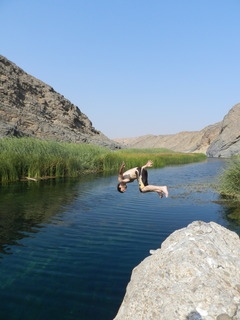 Clockwise from top left: White Beach, near Fins.
Clockwise from top left: White Beach, near Fins.
The start of the hike into Wadi Dayqah.
Crystal clear water in Wadi Dayqah.
Sunset behind the Eastern Hajar Mountains.

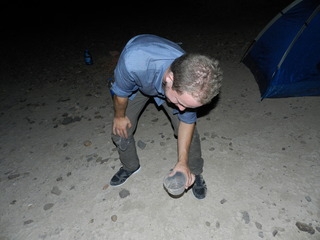 Clockwise from top left: Our final camp in ''Africa''. This place really did remind us of Africa. Charlotte even saw a gazelle!
Clockwise from top left: Our final camp in ''Africa''. This place really did remind us of Africa. Charlotte even saw a gazelle!
Dan catches his first scorpion.
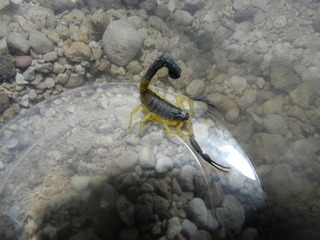
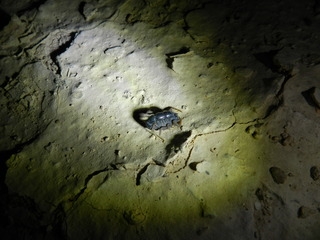

 Clockwise from top left: Hottentotta jayakari inland from Quaryyat.
Clockwise from top left: Hottentotta jayakari inland from Quaryyat.
Orthochirus cf. glabrifrons inland from Quaryyat.
Latrodectus sp. A black widow underneath a piece of wood I was about to pick up. UV torches don't show up spiders!
Solifugid.
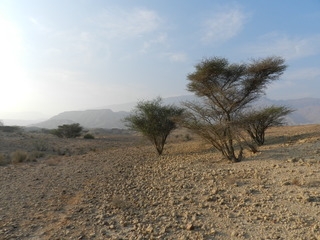
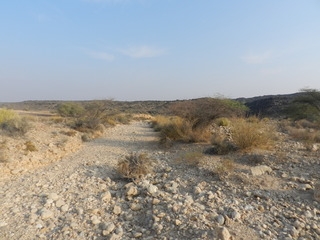 Clockwise from top left: Habitat of O. cf. glabrifrons and Latrodectrus sp. The Latrodectrus sp. was found under dead wood lying at the base of the closest tree.
Clockwise from top left: Habitat of O. cf. glabrifrons and Latrodectrus sp. The Latrodectrus sp. was found under dead wood lying at the base of the closest tree.
H. jayakari were founding waiting in the open or underneath small bushes along the bank of the dry wadi.
After 6 nights of camping we headed back to Muscat for our last two nights in Oman. Camping in a country where temperatures after sunset are warmer than most summer days here in England means getting a good nights sleep is difficult. We were all glad to get back to air-conditioning and showers. Although the star filled skies and steady chirp of insects will be sorely missed.
Oman is a fantastic place. It is safe and friendly, but it hasn't been ruined by mass tourism yet. You can disappear into the mountains and desert for a week of exploring, off-roading and camping, yet return to a clean and pleasant hotel to relax and holiday. Oman isn't a particularly cheap destination, but if you're willing to spend part of your holiday there under canvas you can avoid the relatively high cost of staying in a hotel. Food is still fairly inexpensive, and fuel was at about £0.35 per litre during our visit. All in, the trip cost about £1000 each including flights, 5 nights hotel, 6 nights of camping (free), 4x4 rental, fuel and spending money for food, activities etc. For the cost of an average all inclusive holiday to Spain we got to have a mini-adventure in an Arabian country full of fantastic wildlife, beautiful scenery and some of the friendliest people in the world.

